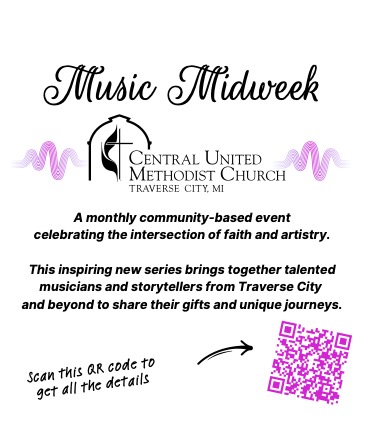
Yes, Traverse City (Still) Has Its Own Currency
By Ross Boissoneau | Jan. 16, 2018
As most of today's conversation about currencies centers on Bitcoin, Ripple, Apple Pay and Venmo, The Ticker wondered about the state of Traverse City’s very own currency – the Bay Buck. Bay Bucks debuted in 2005 and yes, they are still around, if not as popular as they once were.
“We still get them. Oryana has accepted Bay Bucks since the beginning,” says Steve Nance, general manager at the natural foods grocer. It’s one of the few places where they are still used – Odom Reuse in Grawn is another – and Nance half-jokingly calls Oryana the bank of Bay Bucks. Oryana Board members receive a stipend in Bay Bucks, and various local vendors and suppliers are often paid in part with the local dollars.
For those in need of a primer, Bay Bucks is a local currency available in various denominations: $1, $5, $10, $20. When they were first printed and distributed a dozen years ago, more than 100 local individuals and businesses were members who accepted and distributed them. As they are only accepted in their individual communities, local currencies such as Bay Bucks stay local and are intended to stimulate the local economy.
“It started with dissatisfaction with the (then) current currency,” says Brad Kik, an early member of the Bay Bucks Board and co-founder of Crosshatch Center for Art & Ecology in Bellaire. “U.S. dollars were tied to conflict and war, wealth inequality.” Kik says there was a lot of “good early buzz” around the concept. A number of the early adapters were single entrepreneur businesses, people who were already culturally inclined.
But over the years the concept slowly lost steam. Kik says while “charismatic evangelicals” got the ball rolling, it was difficult to get it to circulate into the wider community. Looking back, he says it would have been hugely beneficial to involve more businesses.
Also problematic was the fact a number of those connected with the program moved away. “There was no real model and no staff, and no means to reinvigorate it without a champion and a staff to make it go,” says Holly Jo Sparks. She is still a member of the board, though like Bay Bucks themselves the board is mostly dormant (the most recent post on the Bay Bucks Facebook page is from April 2015).
But while Bay Bucks may be sleeping, they’re not dead yet. The question is, as Sparks puts it, “How does Bay Bucks fit into today’s economy?” She says online marketplaces like eBay and Amazon have fundamentally altered the economy, as have plastic and online tender such as Bitcoin. The paper economy has serious limitations, particularly on a local basis. “I do think there’s a future (for) Bay Bucks. It needs to take advantage of technology,” she says.
“Physical currency is so passé,” echoes Kik. In an age where smartphones and mobile applications have become ubiquitous, he believes adapting local currency to a similar premise could have utility. “I think there’s still some promise for the local model. We can send texts, tied to a local database.”
While it’s doubtful an electronic application tied to local currency model could be used at Amazon, Sparks says similar shopping platforms cooperatively owned could honor a Bay Bucks-type app.
Whatever the form or format, Kik believes using local currency is beneficial. “It’s a response to globalization,” he says. It is a reflection of local values and interests and promotes local investment.
He also says it is important to make sure it is really local rather than regional. “By keeping it really local you can incubate it, rather than it being too wide (too widely distributed) and too thin,” he says.
Meanwhile, back at the bank of Bay Bucks, Nance says Oryana will continue to use the paper Bay Bucks while discussions continue about how – or if – to revitalize the concept. “We’re having discussions as a board about how to reinvigorate Bay Bucks. What are the compelling ‘whys?’ We’ve had some compelling whys but not enough to put energy into it. We could bring it back to the fore,” he says.
Comment






